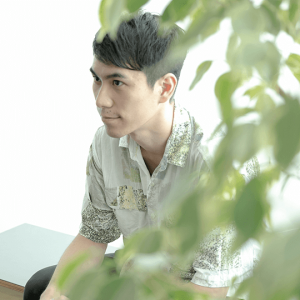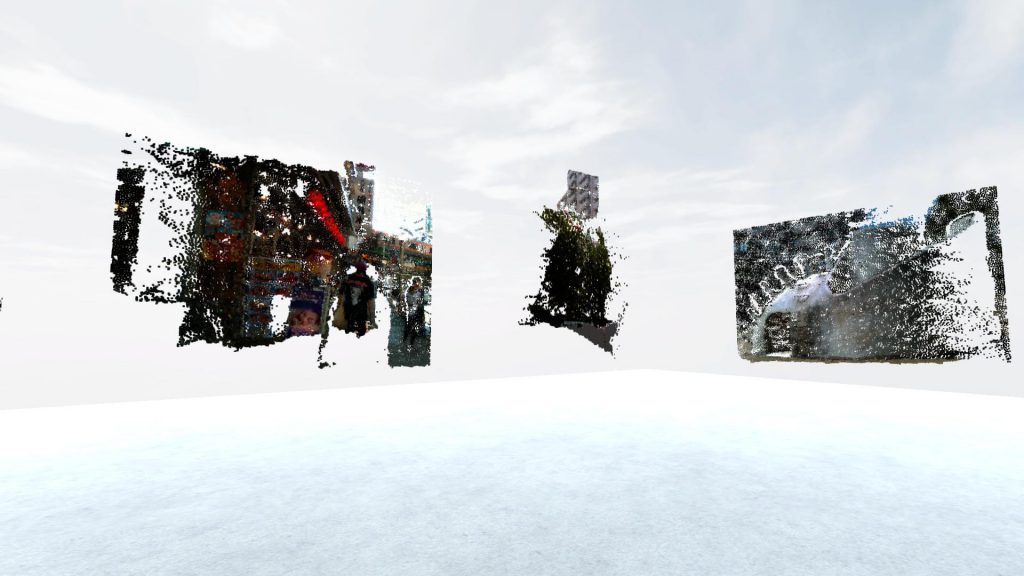インターネットとスマートフォンの普及により、写真はプリントから電子データ化され、広くWEBの世界へ広がるメディアへと変貌した。
特に「Instagram」のような写真に特化した共有アプリケーションが爆発的に広がった結果、写真は一部の熱烈なファンの趣味や、旅先での思い出を記録する不定期使用の媒体から、日常的に誰もが利用するメディアになった。
これは写真という媒体を取り巻く環境が大きく変化した結果だろう。では、VRという新たな技術が普及した際に、また写真というメディアはその姿を変えるのだろうか?
その点に疑問を持ち、次世代の写真とは何か、を探った作品がNEWVIEW AWARDS 2018にて松武秀樹賞を受賞された写真家兼プログラマーの松岡氏が制作した「prints」だ。
今回は制作者である松岡氏に本作品について、お伺いしてきた。
プロフィール

Yuki Matsuoka
写真家 / プログラマー|日本
作品名:prints
1991年生まれ。2016年首都大学東京大学院システムデザイン研究科修了。東京在住。
表現手段としての写真と、写真を取り巻く環境に興味を持っている。
VRが写真と我々の関係性を変える
— 松武秀樹賞、受賞おめでとうございます!まずは、NEWVIEWを知ったキッカケを教えてくれますか?
松岡:ありがとうございます。予想外の結果に、とても嬉しく思っています。
NIEWVIEWについては、Webでアワードの開催記念イベントを知り、そこへ参加したのがキッカケです。
— 応募しようと思ったのはなぜですか?
松岡:イベントのトークで、「アワードの第一回目は、前例がないのでどんなものが出てくるかわからない、それが楽しみ。」というお話を聞き、こういった場にチャレンジするのはおもしろそうだなと思ったので応募を決めました。
— 今回、制作された「prints」はどのようなコンセプトで作られましたか?
松岡:写真はまだ200年にも満たないほどの歴史ですが、デジタルテクノロジーの発展、とりわけインターネットやスマートフォンの登場により僕らと写真の関係性は大きく変わったと思っています。
つまり、誰もがポケットにカメラを持っていて、Webを通じて自分のイメージを発信できる。そして誰もが大量のイメージを毎日見ている、と。そして、VRという技術もまた、写真と僕らの関係性に何か新しい変化をもたらすメディアになるのではないか?というのが今回の制作の動機です。
僕は、そもそも写真はインタラクティブなものだと思っています。もちろん画としては固定されたものなのですが、大きくプリントされたものであれば全体を見てみたり、細部を見てみたり。写真集という形式であれば、ページをめくる、戻す、見開きを凝視するとか。「見る」という行為はとても対話的であると考えています。その点で、現時点のVRは「見る」ということに、自身の身体性に自覚的になれる可能性を秘めていると感じた、というのもあります。
後は作品のステートメントにもありますが、コンピュータの計算によって現れる空間で、写真とはどういった形式で立ち上がるのか?という問いです。レンズを通して入ってきた光は、銀塩写真であってもデジタル写真であっても、粒子あるいはピクセルというグリッドに定着することで構成されていることから、VR空間でも同様にひとつの粒子から構成できないかと考えました。
— なるほど。現在写真家とプログラマー、2足のわらじでアーティスト活動をされていますが、写真に興味持ったキッカケはなんですか?
松岡:大学生になった頃、何か新しいことを始めたいなと考え、軽い気持ちでカメラを持ってみたら思いのほか楽しかったんです。
当時は既にデジタルカメラが普及していて、縮小傾向ではあったのですがフィルムカメラを使って撮影し、学校にあった暗室で夜な夜なプリントしていました。
そうしているうちに、あるギャラリストの方から勧められた畠山直哉さんという写真家の著作「話す写真」を読んで、写真というメディウムそのものに興味を持つようになったのが制作へと続くようになったキッカケです。
カラーと深度情報が入ったテクスチャがフィルムにおけるネガ
— そういう経緯だったのですね。続いて本作品に関してどうような手順で作られたのか、お教えいただけますか。
松岡:作品中の写真はIntel社のRealsense D415という深度カメラとタブレットPCを使って撮影しています。深度カメラの制御用ソフトの開発にはTouchDesignerというヴィジュアルプログラミング環境を使っています。
(本当は深度カメラをRaspberry Piという小さなPCで制御して、コンパクトカメラくらいのサイズに収めたかったのですが処理能力のパフォーマンス上の問題で断念しました。)
撮影によって保存されたカラー情報と深度情報の入ったテクスチャが、フィルムにおけるネガのようなものと考えています。
このネガを使い、DCCツールで3Dの点群に起こしてSTYLYにアップできるよう少しデフォルメします。このプロセスをフィルムでいう現像・定着のプロセスと捉えています。これらの工程を経て、立ち上がったイメージを空間上に配置することで作品として完成させていきました。
制作期間は、コンセプトについてはアワードを知った直後から考えて始めて、実制作は撮影機材の検証・開発なども含めて1ヶ月ほどだったかと思います。

— 本作品を制作する際に最もこだわったポイントを何ですか?
松岡:最初は点群をポイントとして配置することを考えていたのですが、試行錯誤していくうちに、小さい円状のポリゴンで点群をデフォルメすることにしました。位置や視線方向によって見え方が変わったり、点群であるということがより明確になって、コンセプトを表現できたかと思います。
— ありがとうございます。最後に今後の展開を教えてください。
松岡:今回の作品とは逆に、VRについてもう少し研究して、それを写真として落とし込めないかなとぼんやり考えています。
そして、その中で何か新しい発見をして、再度、VR空間での表現にフィードバックするという循環が作れたら最高ですね。
VRと聞くとつい立体を考えがちだが、2DメディアがVRの到来によりどのように変貌するのか? 消えるのか、姿を変えるのか。
この辺りにも今後、スタンダードになりうる空間表現のヒントが隠されているのかもしれない。
VR時代の写真とは何か? 今の段階から注目してみたいと思う。